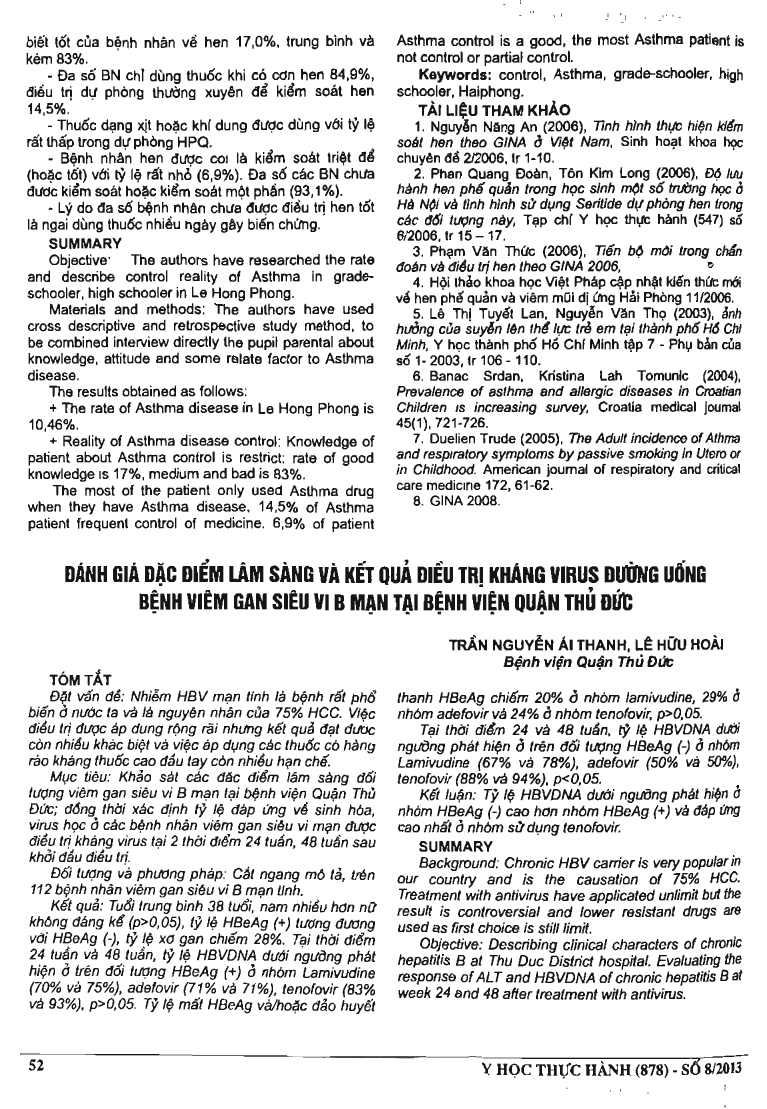
Background: Chronic HBV carrier is very popular in Vietnam and is the causation of 75 percent HCC. Treatment with antivirus have applicated unlimit but the result is controversial and lower resistant drugs are used as first choice is stil limit. Objective: Describing clinical characters of chronic hepatitis B at Thu Duc District hospital. Evaluating the response of ALT and HBVDNA of chronic hepatitis B at week 24 and 48 after treatment with antivirus. Subjects and methods: Observational cross sectional study, with 112 chronic hepatitis Result: The average age: 38, there was no significant difference between men and women (p 0,05), HBeAg (+) ratio and HBeAg (-) ratio were similar, cirrhosis make up 28 percent. In HBeAg (+), at week 24 and 48, undetectable HBVDNA in lamivudine group (70 percent and 75 percent), adefovir (71 percent and 71 percent), tenofovir (83 percent and 93 percent), p0,05. Lost HBeAg or/and HBeAg seroconversion make up 20 percent in lamivudine, 29 percent in adefovir and 24 percent in tenofovir group, p0,05. In HBeAg (-), at week 24 and 48, undetectable HBVDNA in Lamivudine (67 and 78 percent), adefovir (50 percent and 50 percent), tenofovir (88 percent and 94 percent), p0,05. Conclusion: Undetect HBVDNA ratio after treatment with antivirus in HBeAg (-) group was higher than HBeAg (+) and the highest was in tenofovir group.
- Đăng nhập để gửi ý kiến
